The ocean’s tapestry is woven with countless wonders, and among its shimmering threads, few gleam as brightly as the Pompano. Often celebrated for its delectable flavor, this captivating marine fish is far more than just a culinary delight. From its graceful movements in sun-drenched coastal waters to its intricate role in the marine ecosystem, the Pompano offers a fascinating study for anyone intrigued by the natural world. Join us on a deep dive into the life of this remarkable creature, uncovering its secrets from the shallows to the depths of scientific understanding.
Whether you are a budding marine biologist, an avid angler, or simply an admirer of aquatic life, the Pompano presents a compelling subject. Its story is one of adaptation, survival, and interaction, painting a vivid picture of life beneath the waves.
Unveiling the Pompano: A Glimpse into its Identity
The term “Pompano” generally refers to several species within the genus Trachinotus, part of the larger Carangidae family, which also includes jacks and trevallies. Among the most well-known is the Florida Pompano (Trachinotus carolinus), a highly prized fish found along the southeastern coast of the United States. Other notable species include the Palometa (Trachinotus goodei), recognized by its distinctive long, flowing fins, and the Permit (Trachinotus falcatus), a larger, more elusive game fish.
These fish typically exhibit a sleek, compressed body profile, often with a silvery or golden sheen that allows them to blend seamlessly with their sandy or sunlit environments. Their small, forked tails and relatively short dorsal and anal fins are characteristic, though species like the Palometa boast elongated fin rays that add to their elegance.
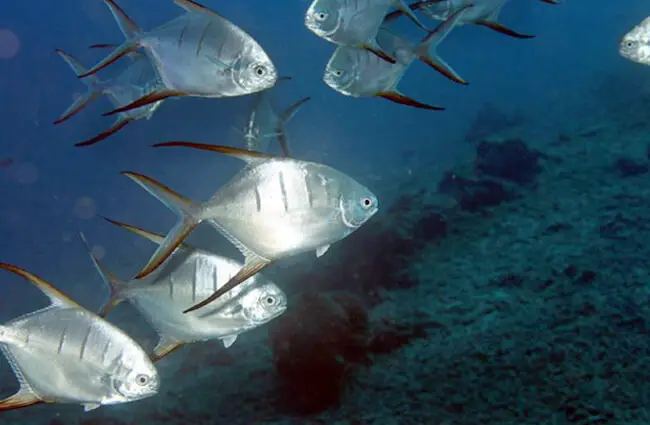
Where the Pompano Roams: Habitat and Distribution
Pompano species are primarily inhabitants of warm temperate and tropical waters across the globe. The Florida Pompano, as its name suggests, is abundant along the Atlantic coast of the United States, particularly from Virginia down to Florida and throughout the Gulf of Mexico. The Palometa has a broader range, extending from Massachusetts south to Brazil in the western Atlantic, and also found in parts of the eastern Atlantic.
These fish prefer shallow, coastal environments. Their ideal habitat includes:
- Sandy beaches: They are often found in the surf zone, where waves break, sifting through the sand for food.
- Estuaries and lagoons: Younger Pompano frequently utilize these sheltered, nutrient-rich areas as nurseries.
- Grass flats: Seagrass beds provide both food and cover.
- Inshore reefs and wrecks: While less common than sandy bottoms, some species may congregate around these structures.
Their migratory patterns are often linked to water temperature, moving to warmer southern waters during colder months and spreading northward as temperatures rise. This makes them a seasonal catch for many coastal communities.
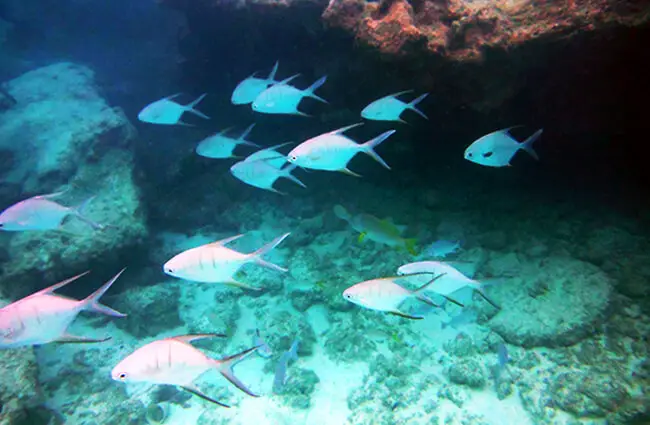
A Glimpse into Pompano Life: Diet and Feeding Habits
Pompano are opportunistic feeders, primarily carnivorous, with a diet that reflects their coastal habitat. Their mouths are relatively small, indicating a preference for smaller prey items. They are adept at using their keen sense of sight and lateral line system to detect food in the turbulent surf.
A typical Pompano diet includes:
- Small crustaceans: This is a staple, particularly mole crabs (also known as sand fleas), shrimp, and small crabs.
- Bivalves: Small clams and other shellfish are dug out of the sand.
- Worms: Various marine worms found in sandy substrates.
- Small fish: Occasionally, very small baitfish may be consumed, especially by larger individuals.
They employ a unique feeding strategy, often swimming along the bottom, using their snouts to root around in the sand and dislodge prey. This behavior is crucial for their survival in their preferred sandy environments.
The Circle of Life: Pompano Mating and Reproduction
The reproductive cycle of Pompano is a fascinating aspect of their biology, ensuring the continuation of their species in dynamic coastal waters. Spawning typically occurs in offshore waters, often near inlets or along coastal beaches, during warmer months, generally from spring through summer, depending on the specific species and geographic location.
Key aspects of Pompano reproduction include:
- Broadcast Spawning: Pompano are broadcast spawners, meaning females release eggs and males release sperm into the water column, where fertilization occurs externally.
- High Fecundity: Females can produce a large number of eggs, sometimes hundreds of thousands, to maximize the chances of survival for their offspring.
- Pelagic Eggs and Larvae: The fertilized eggs are pelagic, floating freely in the open water. After hatching, the larval Pompano are also pelagic, drifting with currents.
- Nursery Habitats: As they grow, juvenile Pompano migrate to sheltered inshore areas such as estuaries, lagoons, and shallow grass flats. These protected environments provide abundant food and refuge from larger predators, allowing them to develop before venturing into more open coastal waters.
Sexual maturity is typically reached within one to two years, with individuals growing rapidly in their early life stages.
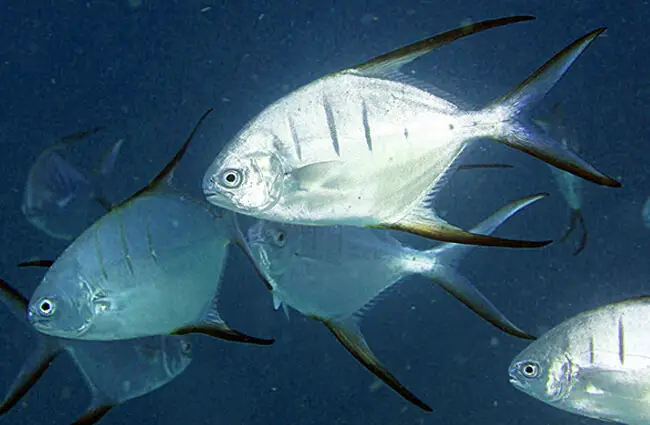
Pompano in the Wild: Finding and Observing Them
For the animal lover or aspiring zoologist hoping to encounter a Pompano in its natural habitat, understanding its preferences is key. Pompano are often found in schools, particularly juveniles, making them a captivating sight.
Where and How to Find One:
- Location: Focus on sandy beaches with moderate surf, especially near inlets, passes, and tidal creeks. Look for areas where waves are breaking consistently.
- Time of Day: They are often most active during periods of strong tidal movement, particularly around dawn and dusk, but can be found throughout the day.
- Water Conditions: Clear to slightly turbid water is preferred. They tend to shy away from very murky conditions.
- Observation Tips:
- Shoreline: Walk along the beach at low tide, looking for subtle disturbances in the sand or small schools of fish darting in the shallows.
- Snorkeling/Diving: In very clear, calm conditions, snorkeling or diving in shallow grass flats or sandy bottoms near the surf can offer a direct view, especially of Palometa with their distinctive fins.
- Fishing Piers/Jetties: These structures often extend into prime Pompano habitat, offering elevated vantage points.
Encountering Pompano: What to Do (and Not Do)
If you are a hiker or beachgoer and happen upon a Pompano, perhaps washed ashore or struggling in a shallow pool, remember these guidelines:
- Observe from a Distance: If the fish appears healthy and is in its natural environment, simply enjoy the sighting without disturbing it.
- Do Not Touch: Avoid handling wild fish unless absolutely necessary for rescue, as this can remove their protective slime coat and cause stress.
- If Stranded: If you find a live Pompano stranded on the beach or in a rapidly receding tide pool, and it appears healthy, you may gently guide it back to deeper water using wet hands or a wet towel. Minimize handling time.
- Report Concerns: If you observe a large number of distressed or deceased fish, or suspect pollution, contact local wildlife authorities or environmental agencies.
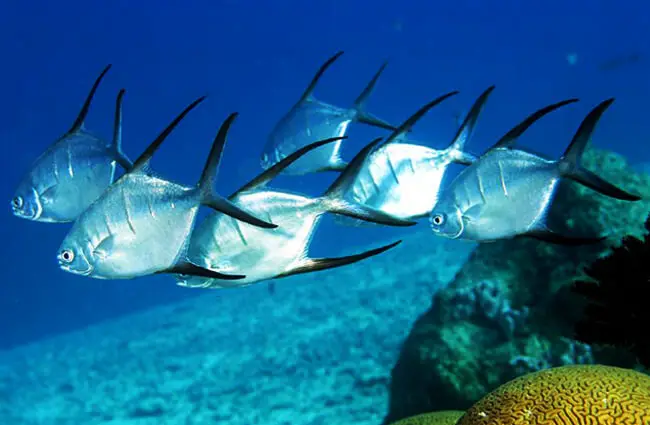
The Pompano’s Place: Ecosystem Role and Interactions
Pompano play a vital role in the delicate balance of coastal ecosystems, acting as both predator and prey within the food web.
Contribution to the Ecosystem:
- Forage Species: Juvenile Pompano serve as an important food source for a wide array of larger predatory fish, seabirds, and marine mammals.
- Predator of Invertebrates: By consuming vast quantities of mole crabs, shrimp, and other benthic invertebrates, Pompano help regulate these populations, preventing overgrazing or overpopulation of certain species. This contributes to the health of sandy bottom communities.
- Nutrient Cycling: Through their feeding and waste products, Pompano contribute to the cycling of nutrients within their habitat.
Interaction with Other Animals:
- Predators: Larger fish such as sharks, barracudas, snook, and tarpon frequently prey on Pompano. Marine birds like pelicans and cormorants also target them, especially in shallow waters.
- Competition: Pompano compete with other bottom-feeding fish species for similar food resources, such as whiting and croakers.
- Schooling Behavior: Pompano often form schools, a common anti-predator strategy that can confuse attackers and reduce the individual’s chance of being caught.
Evolutionary Journey of the Pompano
The Carangidae family, to which Pompano belong, has a rich evolutionary history, with fossil records indicating their presence dating back millions of years. These fish are believed to have evolved in tropical and subtropical marine environments, adapting over time to exploit the abundant resources of coastal and pelagic zones.
Key evolutionary adaptations for Pompano include:
- Streamlined Body: Their fusiform (spindle-shaped) and compressed bodies are highly efficient for fast swimming and maneuvering in dynamic water conditions, allowing them to escape predators and pursue prey.
- Specialized Mouthparts: Their relatively small, protractile mouths are well-suited for sifting through sand and picking up small invertebrates, a niche that has proven highly successful.
- Coloration: The silvery, iridescent scales provide excellent camouflage in sunlit shallow waters, making them difficult for predators to spot from above or below.
- Schooling Instincts: The development of strong schooling behaviors is a significant evolutionary advantage for survival against larger predators.
The diversity within the Trachinotus genus, with species adapted to slightly different niches and geographic ranges, further illustrates their evolutionary success and adaptability.
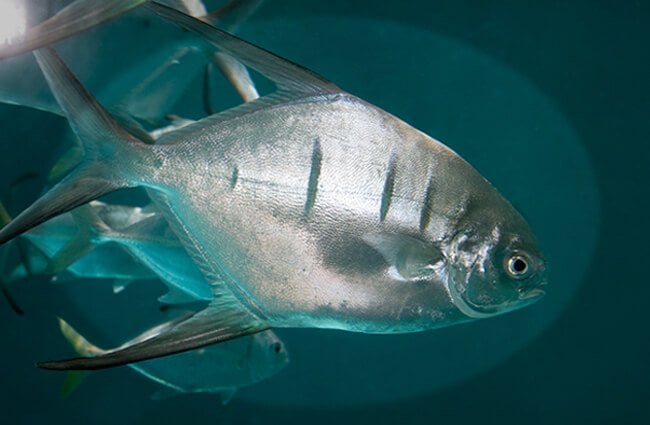
Pompano and Humanity: A Shared History
The interaction between Pompano and humans spans centuries, primarily revolving around its value as a food source and a prized game fish.
Contribution to Human Culture:
- Culinary Delicacy: Pompano is highly regarded in many coastal cultures for its firm, white, flaky flesh and delicate flavor. It is a staple in fine dining and local cuisine, particularly in the southeastern United States and Caribbean. Its culinary appeal has led to its nickname, “the fish of kings.”
- Recreational Fishing: Pompano are a popular target for recreational anglers, especially surf fishermen, due to their fighting spirit and delicious taste. This contributes significantly to coastal tourism and local economies.
- Art and Literature: While perhaps not as prominent as some other marine species, Pompano occasionally appear in local folklore, art, and culinary writings, symbolizing the bounty of the sea.
Interaction with Humans:
- Commercial Fishing: Pompano are commercially harvested using various methods, including gillnets and seines. Sustainable fishing practices and regulations are crucial to prevent overfishing.
- Aquaculture: Due to its high market value, Pompano has become a species of interest for aquaculture. Efforts are underway to develop efficient and sustainable methods for farming Pompano, which could reduce pressure on wild stocks and provide a consistent supply.
- Conservation Challenges: Like many coastal species, Pompano face threats from habitat degradation (coastal development, pollution), climate change (sea-level rise, ocean acidification), and fishing pressure. Conservation efforts focus on protecting critical habitats, managing fishing quotas, and promoting responsible aquaculture.
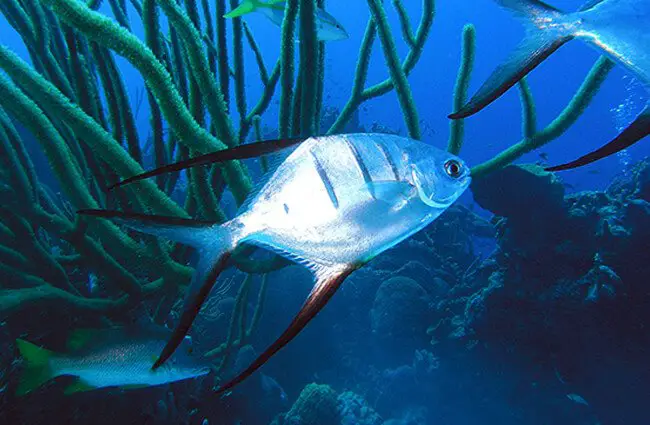
Pompano in Captivity: A Zookeeper’s Guide
Caring for Pompano in a captive environment, such as a public aquarium or research facility, requires specialized knowledge to replicate their natural conditions and ensure their well-being.
Tasks for a Zookeeper:
- Tank Design and Size:
- Provide a spacious tank with ample swimming room, as Pompano are active swimmers.
- A sandy substrate is essential to mimic their natural foraging behavior.
- Ensure good water flow and oxygenation, simulating surf conditions.
- Water Quality Management:
- Maintain stable salinity (typically 30-35 ppt for marine species).
- Keep water temperature within their natural range (e.g., 70-80°F or 21-27°C for Florida Pompano).
- Regularly monitor and maintain optimal pH, ammonia, nitrite, and nitrate levels through robust filtration systems.
- Diet and Feeding:
- Offer a varied diet of high-quality marine pellets, frozen or live brine shrimp, mysis shrimp, and chopped seafood (e.g., squid, fish pieces).
- Feed multiple times a day in smaller portions to mimic natural foraging and prevent water fouling.
- Supplement with vitamins if necessary.
- Social Structure:
- Pompano are schooling fish, so keeping them in groups (especially juveniles) can reduce stress and encourage natural behaviors.
- Monitor for aggression, though generally peaceful, especially when well-fed.
- Health Monitoring:
- Regularly observe fish for signs of disease, stress, or injury (e.g., clamped fins, lethargy, lesions, abnormal swimming).
- Quarantine new arrivals to prevent disease introduction.
- Have protocols for disease diagnosis and treatment.
- Enrichment:
- Provide opportunities for natural behaviors, such as a sandy bottom for digging.
- Vary feeding locations or methods to stimulate foraging.
What to Avoid:
- Overcrowding: Leads to stress, poor water quality, and increased disease susceptibility.
- Sudden Water Parameter Changes: Pompano are sensitive to rapid shifts in temperature, salinity, or pH.
- Inadequate Filtration: Poor water quality is a primary cause of health issues in captive fish.
- Monotonous Diet: Can lead to nutritional deficiencies.
- Aggressive Tank Mates: Avoid housing Pompano with overly aggressive or much larger fish that could harass or prey on them.
- Harsh Lighting: Provide appropriate lighting cycles and avoid overly bright, constant illumination.
Fascinating Pompano Facts
- Pompano can grow up to 25 inches in length, though most commonly caught individuals are smaller.
- They are known for their incredible speed and agility, making them challenging for anglers to catch.
- The Florida Pompano is sometimes referred to as “permit” by mistake, but permits are generally larger and have more elongated dorsal and anal fins.
- Their distinctive silvery-gold coloration helps them disappear against the sandy bottom and reflective surface of the water.
- Pompano are often found “tailing” in very shallow water, with their tails breaking the surface as they root for food in the sand.
- They have a relatively short lifespan, typically living for 3 to 4 years in the wild.
- The name “Pompano” is believed to derive from the Portuguese word “pampo,” referring to a type of flatfish.
From the sun-drenched beaches where they forage to the dinner plates where they are celebrated, Pompano are truly remarkable fish. Their adaptability, ecological significance, and interactions with human culture make them a subject worthy of continued study and appreciation. By understanding and respecting these shimmering inhabitants of our coastal waters, we can ensure their continued presence for generations to come, preserving both their natural wonder and their cultural legacy.

![Red Angus Closeup of a beautiful Red Angus cowPhoto by: U.S. Department of Agriculture [pubic domain]https://creativecommons.org/licenses/by/2.0/](https://animals.net/wp-content/uploads/2020/03/Red-Angus-4-238x178.jpg)




![Red Angus Closeup of a beautiful Red Angus cowPhoto by: U.S. Department of Agriculture [pubic domain]https://creativecommons.org/licenses/by/2.0/](https://animals.net/wp-content/uploads/2020/03/Red-Angus-4-100x75.jpg)

